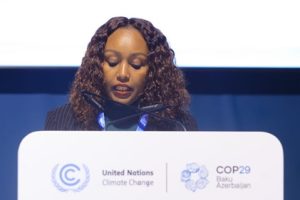
Ethiopia has a thousand and above years’ experience in planting seedlings of different plant species with whole nations living together.
Now to get fruits of it, greening the human mind is an engine to green the environment and a catalyst that facilitates inclusive development with democracy in every corner of the country as well as the globe.
Even after PM Abiy Ahmed (PhD) has come to power as the head of the state, he promised to plant seedlings for straight years and made a record on a green environment. He also promised to continue it year to year as Ethiopia has come to green and even convenient for livings things.
This has begun in 2019 in breaking the record of India 66 million in 12 hours with over 350 million records in collaboration with stack holders and other partners. It is the recent memory for all Ethiopians and the rest of the world.
To sustain this action, Ethiopia has announced efforts to consolidate the government’s Green Legacy initiative which was started by Prime Minister. It has also gone well this year through the participation of sector offices and the Media.
The prime minister’s office said that the plan for the year 2020 is to plant 5 billion trees. The media and other stack holders should play their parts through planting seedlings and motivating others.
With this ambitious plan to plant 5 billion trees in one year, the Green Legacy campaign has the chance to be succeeded as the past year’s magnificent performance of planting over 300 million trees in 12 hours which is much higher than the plan to plant 200 million seedlings.
In order to continue the previous year’s seedling operation, the current greenery campaign of planting 5 billion tree seedlings has created favorable condition. To this end, the tree plantation activity is underway by responsible organs, said the steering committee at the national level.
The National Steering Committee has to make monitoring on the year’s planting trees since it is its specific objectives related to the aim that it is organized as a national level in cooperation with different structures from federal to regional levels, said Dr.Tefera Mengistu, head of the technical committee.
The core national technical committee was established to improve situations from previous and lead this campaign to coordinate and ensure tree planting activities across different parts properly and effectively at respective planting spots to make green the surroundings.
Learning from the past experience, the current seedling planting has shifted to local plant species, especially fruit bearing plants like Avocado, Banana, Mango, Peach, etc. This has been done depending on the nature of the areas those are serving for many years as nourishment and medicine for human beings. The local plants can provide more oxygen in contrast to the newly coming trees.
Besides, the amount of seedlings grown up is increasing from year to year as a result of assigning accountable organs to follow-up the situation in what way the plants are going on after being planted, Dr.Tefera noted.
According to Dr.Tefera, improvements have been seen since the past year showcasing that it is possible to achieve this year’s plan too and score new record through collaborative works and beating the plan of planting 5 billion tree seedlings.
This is a significant measure for Ethiopia to address forest problems, especially to reduce deforestation and enhance forest development, and thereby, improve forest goods and services that have crucial social, economic and environmental roles, Dr.Tefera added.
This has been done in parallel with taking initiation on providing fruit bearing plants in the campaign. This has a great role in increasing the size and quality of forest through time and declining the country’s annual forest deficit and loss.
Ethiopia has strengthened this action after hearing the bothering report of Food and Agriculture Organization (FAO) that indicates the global forest coverage is declining from time to time. Since 1990s, Southern America and Africa are affected by deforestation losing 420 million hectares of forest. Africa in particular, is affected by deforestation losing 400 million hectares of forest during the past 30 years.
For Ethiopia, forest development and management is not a matter of choice, rather it is essential to ensure sustainable development and to achieve predominant Climate Resilient Green Economy (CRGE) and the 10 year Perspective development Plan strategies.
Ethiopia’s land features are characterized by mountainous and rugged topographic landscapes that are suitable for natural resources conservation including flora and fauna, water reservoirs, and multiple functions.
Therefore, landscapes and watersheds management through natural regeneration and restoration have important contributions to the country and beyond its territory.
For instance, forestry development has a critical role to address climate change effects through mitigation and adaptation measures, which have national and international significance.
Afforestation and reforestation activities reduce wood supply and demand gaps as Ethiopian rural communities significantly depend on the forest products. This includes income generation, construction materials, energy, farm tools, and foods.
Commonly, this forest development action has multiple contributions and effects that encompass social, economic, and environmental aspects at regional, national and global scales.
This event is the beginning of a long journey, which requires building on this momentum and transforming it into an institutional and strategic approach to realize the intended objectives.
It is believed that the ultimate goal of Ethiopia’s tree planting is to enhance forest resources to provide improved goods and services sustainably.
Day and night awareness creation on planting tree seedlings and saving the environment for the future Ethiopia and the rest of the world are needed in a great manner. The driving purposes for this is people breath oxygen the byproduct of forest, gain food for people and animals from forest and use them in different ways. So every Ethiopian has to plant trees and should have to conserve it, to feed the cool atmosphere for today and next generation.
Dr, Tefera added that the Media and concerned bodies with a green mind should exert focus, pay attention, raise awareness, and immersion for it. There is clear evidence to show that activities that are immersive and involve focused attention are effective in improving well-being of the environment.
Failure in doing these can cause instant physiological changes by reducing oxygen consumption, lowering heart beat and blood pressure, and increasing the release of serotonin and dopamine.
The importance of recovering measurements to emphasize attention was first proposed by all leading to a growing understanding of the uplifting benefits of nature for Ethiopians and the globe.
Attention Restoration Theory showed how focused attention has positive outcomes which could recover the environment via engaging varieties of actors for the wellbeing of both natural and artificial surroundings.
Many recent researches on autogenesis indicate that the range of factors supporting health and well-being of living creatures has developed an understanding of how environments can both reduce the effect and restore internal resources.
The Ethiopian Herald July 28, 2020
BY MUSSA MUHAMMED





